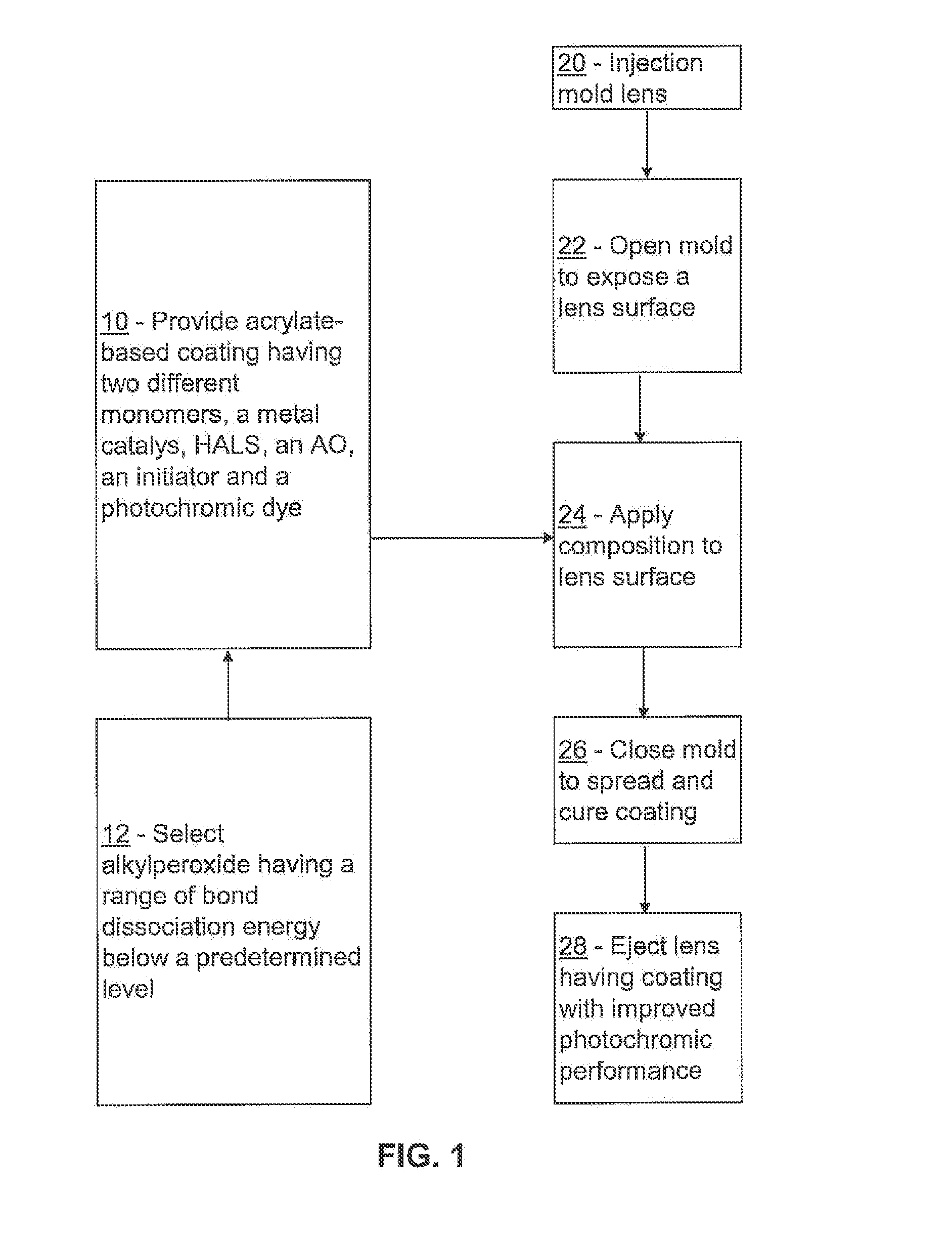Photochromic coating exhibiting improved performance and reduced yellowness
a technology of photochromic coating and yellowness, applied in the field of photochromic coating, can solve the problems of compromising the high impact nature of polycarbonate, the surface discontinuity of bifocal and trifocal segmented lenses is not well suited to these typical coating processes, and the undesirable darker color at the segment can be undesirable, so as to achieve the effect of low yellowness
- Summary
- Abstract
- Description
- Claims
- Application Information
AI Technical Summary
Benefits of technology
Problems solved by technology
Method used
Image
Examples
Embodiment Construction
[0027]Thermoplastic lenses must be extremely clean before they can be coated. In the regular lens coating process, after the lenses are taken out of mold and degated, they have to be transferred and go through several different cleaning tanks before being coated. The coatings often require heat or UV light in order to cure. The transfer, cleaning, coating and curing operations utilize vast amounts of space and have high power demands to operate conveyors, pumps, heaters and curing ovens. That adds to the cost of the finished product. Accordingly, it would be desirable to coat a lens soon after it is formed by injection molding. In contrast to the prior art, a lens can be coated in-mold within 1 or 2 minutes of initial environmental contact before ejection or degating, thereby eliminating those operations as contamination sources.
[0028]According to one embodiment of the invention, a photochromic coating formulation is provided. The coating formulation contains (1) a photochromic dye;...
PUM
| Property | Measurement | Unit |
|---|---|---|
| thickness | aaaaa | aaaaa |
| photochromic | aaaaa | aaaaa |
| aliphatic | aaaaa | aaaaa |
Abstract
Description
Claims
Application Information
 Login to View More
Login to View More - R&D
- Intellectual Property
- Life Sciences
- Materials
- Tech Scout
- Unparalleled Data Quality
- Higher Quality Content
- 60% Fewer Hallucinations
Browse by: Latest US Patents, China's latest patents, Technical Efficacy Thesaurus, Application Domain, Technology Topic, Popular Technical Reports.
© 2025 PatSnap. All rights reserved.Legal|Privacy policy|Modern Slavery Act Transparency Statement|Sitemap|About US| Contact US: help@patsnap.com



